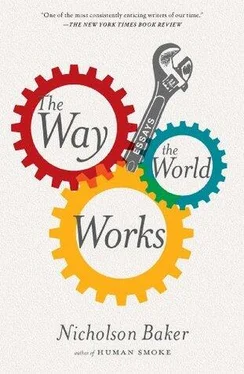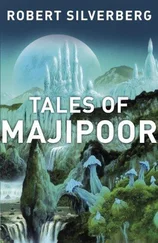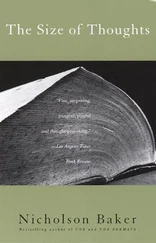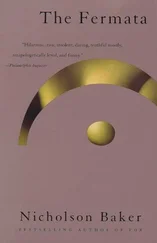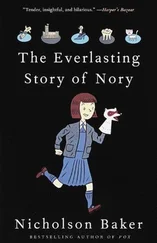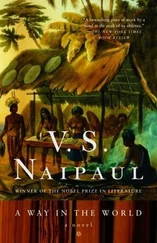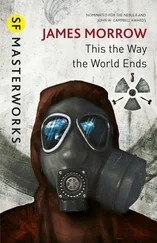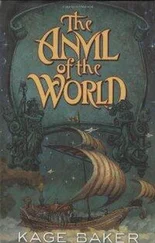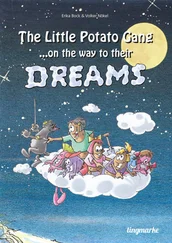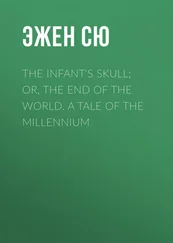Nicholson Baker - The Way the World Works
Здесь есть возможность читать онлайн «Nicholson Baker - The Way the World Works» весь текст электронной книги совершенно бесплатно (целиком полную версию без сокращений). В некоторых случаях можно слушать аудио, скачать через торрент в формате fb2 и присутствует краткое содержание. Год выпуска: 2012, Издательство: Simon & Schuster, Жанр: Публицистика, Критика, на английском языке. Описание произведения, (предисловие) а так же отзывы посетителей доступны на портале библиотеки ЛибКат.
- Название:The Way the World Works
- Автор:
- Издательство:Simon & Schuster
- Жанр:
- Год:2012
- ISBN:нет данных
- Рейтинг книги:4 / 5. Голосов: 1
-
Избранное:Добавить в избранное
- Отзывы:
-
Ваша оценка:
- 80
- 1
- 2
- 3
- 4
- 5
The Way the World Works: краткое содержание, описание и аннотация
Предлагаем к чтению аннотацию, описание, краткое содержание или предисловие (зависит от того, что написал сам автор книги «The Way the World Works»). Если вы не нашли необходимую информацию о книге — напишите в комментариях, мы постараемся отыскать её.
), here assembles his best short pieces from the last fifteen years.
The Way the World Works
OED
Modern Warfare 2
Through all these pieces, many written for
, and
, Baker shines the light of an inexpugnable curiosity.
is a keen-minded, generous-spirited compendium by a modern American master.
The Way the World Works — читать онлайн бесплатно полную книгу (весь текст) целиком
Ниже представлен текст книги, разбитый по страницам. Система сохранения места последней прочитанной страницы, позволяет с удобством читать онлайн бесплатно книгу «The Way the World Works», без необходимости каждый раз заново искать на чём Вы остановились. Поставьте закладку, и сможете в любой момент перейти на страницу, на которой закончили чтение.
Интервал:
Закладка:
Not enough shipping and transport? Two years earlier, the British had evacuated nearly 340,000 men from the beaches of Dunkirk in just nine days. The U.S. Army Air Forces had many thousands of new planes. During even a brief armistice, the Allies could have airlifted and transported refugees in very large numbers out of the German sphere.
In the American press, calls for a negotiated peace were all but inaudible. The only significant publicity that any U.S. peace advocacy group got after 1942 was negative — witheringly negative, in one instance, and rightly so. It came in connection with the formation of something called the Peace Now Movement, which set up an office on Manhattan’s East Fortieth Street in July 1943. Abraham Kaufman, while admiring the antiwar writings of the new group’s chairman, George Hartmann, remained wary of this group, and not just because its name appropriated his own group’s most stirring and useful phrase. What disturbed him was that the Peace Now Movement was willing, as the War Resisters League was not, to accept support from pro-fascists or anti-Semites, or even from “the devil himself,” according to Hartmann, in order to bring the war to an end.
Kaufman also had doubts about the past of one of the group’s organizers, John Collett, who’d been institutionalized for a mental disorder, and whose Norwegian visa imparted a fascist taint. In any case, Collett, out on a speaking tour, self-destructed: he was arrested in Cincinnati for peeping into a sorority shower and fined a hundred dollars.
After Collett resigned, another Peace Now staffer, Bessie Simon, carried on her friendly overtures to prominent isolationists and Nazi apologists, including Charles Lindbergh. Simon also hired a pretty blonde secretary, who turned out to be a plant working under an assumed name (“Virginia Long”), and whose stolen haul of damning correspondence soon found its way to the New York Post . PEACE NOW ENLISTS BUNDISTS! was one front-page headline in a week-long exposé. Life called the Peace Now Movement “not only dangerous but subversive”; the House Un-American Activities Committee condemned one of the group’s mailings, which encouraged churchmen to ask their congregations to follow Christ and lay down their arms. It was, the Dies Committee determined, “a plan for mass treason which was truly colossal in its conception.”
As Kaufman had foreseen, the scandal of Hartmann’s Peace Now Movement eclipsed much of the work he and his colleagues had done. Now, if you were willing to say publicly that the killing should stop, you weren’t just a harmless simpleton, you were a fascist fellow-traveler. According to David Lawrence, a widely syndicated conservative columnist and editor of U.S. News, peace talk diminished Allied soldiers’ fighting zeal. “It is a weapon which is worth more to the enemy than any other,” he wrote. “That’s why it is vital to squelch any ‘peace now’ activities at their very inception.”
And yet Kaufman, Hughan, and the other pacifists — the real ones — regrouped and carried on. In March 1944, with thousands of Jews still living who were not destined to survive, the War Resisters League published an updated demand that the Allies call a peace conference, stipulating Jewish deliverance. “The fortunes of war have turned, and with them the responsibility for war,” Jessie Hughan wrote. “The guilt is upon our heads until we offer our enemies an honorable alternative to bitter-end slaughter. Are we fighting for mere victory or, as enlightened adults, for humanity and civilization?”
We were fighting, it seems, for mere victory. It was inconceivable that we could stop, even though an end to the fighting was the solvent that would have dissolved quicker than anything the thick glue of fear that held Hitler and Germany together. By 1944, Hitler’s health was failing. He was evil, but he wasn’t immortal. Whether or not the German opposition, in the sudden stillness of a conditional armistice, would have been able to remove him from power, he would be dead and gone eventually. And some of his millions of victims would have lived.
Peace and quiet was what the world needed so desperately then. Time to think, and mourn. Time to sleep without fear. Time to crawl out of the wreckage of wherever you were and look around, and remember what being human was all about. Instead, what did we do? Bomb, burn, blast, and starve, waiting for the unconditional surrender that didn’t come until the Red Army was in Berlin. We came up with a new kind of “sticky flaming goo,” as the New York Times called what would later be known as napalm. Allied airplanes burned the Rouen cathedral, so that the stones crumbled to pieces when touched, destroyed Monte Cassino, and killed two hundred schoolchildren during a single raid in Milan. A conservative MP, Reginald Purbrick, who had wanted the Royal Air Force to drop a big bomb into the crater of Mount Vesuvius (“to make a practical test as to whether the disturbances created thereby will give rise to severe earthquakes and eruptions”), began asking the prime minister whether the Royal Air Force might bomb Dresden and other cities in eastern Germany. Churchill eventually obliged him. Remorse works well, but it works only in peacetime.
When Vera Brittain argued against the Allied program of urban obliteration in her 1944 pamphlet Massacre by Bombing, the Writers’ War Board, a government-funded American propaganda agency, pulled out all the stops in attacking her. MacKinlay Kantor (who later cowrote Curtis LeMay’s memoir, the one that talked about bombing Vietnam “back into the Stone Age”) published a letter in the Times dismissing Britain’s “anguished ramblings.” The Japanese and Germans well understood the “language of bombs,” Kantor said. “May we continue to speak it until all necessity for such cruel oratory has passed.”
Some historians, still believing that bombing has a magical power to communicate, conclude from this dismal stretch of history that the Allied air forces should have bombed the railroad tracks that led to the death camps, or bombed the camps themselves. But bombing would have done absolutely nothing except kill more Jews (and Jews were already dying when Allied fighter planes routinely strafed boxcars in transit). A cease-fire—“a pause in the fury of hostilities,” as Vera Brittain called it in one of her newsletters — was the one chance the Allies had to save Jewish lives, and the pacifists proposed it repeatedly, using every means available to them.
They were ignored. The Holocaust continued, and the firebombing continued: two parallel, incommensurable, war-born leviathans of pointless malice that fed each other and could each have been stopped long before they were. The mills of God ground the cities of Europe to powder — very slowly — and then the top Nazis chewed their cyanide pills or were executed at Nuremberg. Sixty million people died all over the world so that Hitler, Himmler, and Goering could commit suicide? How utterly ridiculous and tragic.
Pacifism at its best, said Arthur Ponsonby, is “intensely practical.” Its primary object is the saving of life. To that overriding end, pacifists opposed the counterproductive barbarity of the Allied bombing campaign, and they offered positive proposals to save the Jews. Create safe havens, call an armistice, negotiate a peace that would guarantee the passage of refugees. We should have tried. If the armistice plan failed, then it failed. We could always have resumed the battle. Not trying leaves us culpable.
At a Jewish Peace Fellowship meeting in Cincinnati some years after the war, Rabbi Cronbach was asked how any pacifist could justify opposition to World War II. “War was the sustenance of Hitler,” Cronbach answered. “When the Allies began killing Germans, Hitler threatened that, for every German slain, ten Jews would be slain, and that threat was carried out. We in America are not without some responsibility for that Jewish catastrophe.”
Читать дальшеИнтервал:
Закладка:
Похожие книги на «The Way the World Works»
Представляем Вашему вниманию похожие книги на «The Way the World Works» списком для выбора. Мы отобрали схожую по названию и смыслу литературу в надежде предоставить читателям больше вариантов отыскать новые, интересные, ещё непрочитанные произведения.
Обсуждение, отзывы о книге «The Way the World Works» и просто собственные мнения читателей. Оставьте ваши комментарии, напишите, что Вы думаете о произведении, его смысле или главных героях. Укажите что конкретно понравилось, а что нет, и почему Вы так считаете.
